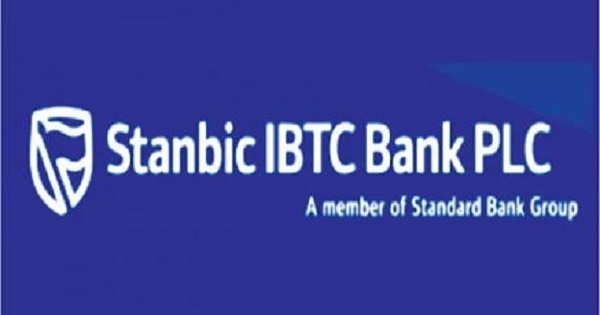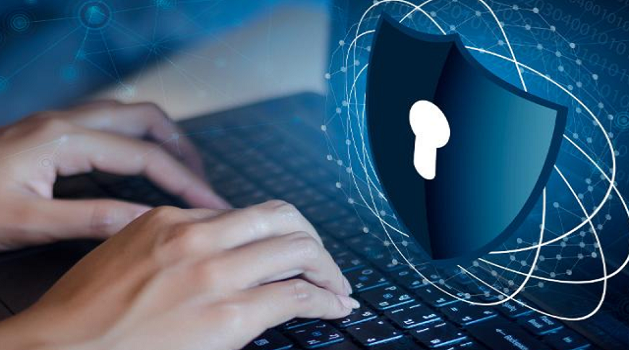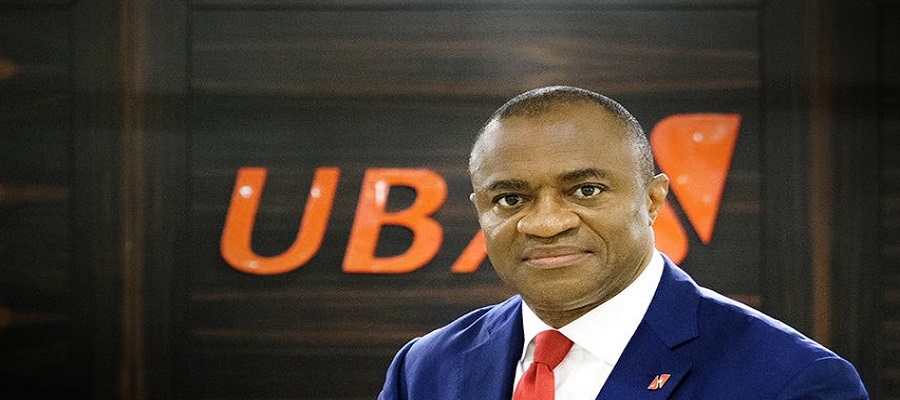E-Business
Supreme Court Orders Stanbic IBTC Bank to Pay Customer N2.5Bn Damages

Supreme Court of Nigeria has affirmed the judgement of a Federal High Court sitting in Lagos, Southwest Nigeria that ordered Stanbic IBTC bank Plc to pay one of its customers, Mr Patrick Akinkuotu and his company Long Term Global Capital Limited the sum of N2.5 billion for breach of contract.
The judgement of the apex court arose from the judgement of a Federal High Court in Lagos, who had earlier awarded the N2.5 billion as damages against the bank.
The case of Akinkuotu and his company against Stanbic IBTC bank Plc as presented by their lawyer, Chief Felix Fagbohungbe SAN was that, the bank granted overdraft facility of N600 million to Long Term Capital Ltd on the 11th of April, 2007.
The bank also granted two additional facilities of N400 million and N250 million to Akinkuotu on the 11th of May, 2007 and 17th of July, 2007 respectively. The facilities were for a term of 365 days with an option of rollover among other terms.
Upon application by Akinkuotu, the facilities granted them were merged and same were secured with shares held by them in various companies. The bank, upon instruction received via e-mail sold 28,745,400 units of GTB PLC shares held by Akinkuotu and his company at the sum of N267,775,799.21.
The Plaintiffs became aggrieved and contended that the proceed of the shares sold by the bank was very low. They also contended that they have liquidated the overdraft facilities granted them by Stanbic IBTC bank Plc, consequently they sued the bank for breach of contract and claimed damages for loss of business opportunity.
Fagbohungbe, SAN on his part, argued that the case of his client was that of gross negligence and unprofessionally selling the shares separately owned by Mr Akinkuotu and his company at significantly lower and unauthorized prices whilst purportedly acting on Mr Akinkuotu’s unsigned e-mail alone between him and the officer of the bank Mr.N.Udoh while ignoring entirely the specific terms of the sale mandate officially issued by his clients
The trial court while entering judgement in their favour awarded them N2.5 billion damages, and said “The law stipulates that court should discountenance an unsigned document as its contents cannot override a duly executed mandate in the circumstances”
Dissatisfied with the judgement of the court, Stanbic IBTC bank Plc appealed the judgement, however, its case was dismissed by the Court of Appeal.
Thereafter, the bank took its case to Supreme Court, the court after appraising the facts and submission of Fagbohungbe appearing with Barrister Abayomi Adeniran as presented on behalf of Akinkuotu and his company and O. Ayanlaja, SAN appearing with Tayo Oyetibo, SAN for Stanbic IBTC Plc, in a judgment delivered by five panel members of judges dismissed the appeal of the bank for lacking in merit and awarded cost of N50,000 in favour of Akinkuotu and his company and against Stanbic IBTC Bank Plc .
E-Business
Financial Sector Faced AI, Blockchain and Organised Crime Threats in 2025 – Report

The 2025 Kaspersky Security Bulletin provides a review of the major cybersecurity trends of the year and offers a look towards the future of cybersecurity, including within the financial sector.

According to the report, in 2025, the financial sector navigated a rapidly evolving cyber landscape, with malware spreading through messaging apps, AI-assisted attacks, supply chain compromises, and NFC-based fraud.
Based on Kaspersky Security Network statistics for the year (from November 2024 to October 2025), 8.15% of users in the finance sector globally faced online threats and 15.81% faced local (on-device) threats. 1,338,357 banking trojan attacks were detected by the company’s solutions. 12.8% of B2B finance sector companies faced ransomware this year – that marks a 35.7% increase in unique users in 2025 compared to the same period of 2024.
The company’s experts highlight the following cybersecurity trends and cases shaping the financial sector in 2025:
Large-scale supply chain attacks: the financial sector faced a series of unprecedented supply chain attacks, which are incidents that exploit vulnerabilities in third-party providers to reach their primary targets. The breaches demonstrated how vulnerabilities in third-party providers can cascade through national payment networks, affecting even central systems.
Organised crime converging with cybercrime: organised crime is increasingly combining physical and digital methods, creating more sophisticated and coordinated attacks. Financial institutions faced threats that blend social engineering, insider manipulation, and technical exploitation.
Old malware, new channels: cybercriminals increasingly exploit popular messaging apps to spread malware, shifting from email phishing to social channels. Banking trojans are being rewritten to use messaging platforms as a new distribution vector, enabling large-scale infections.
AI scales malware to new heights: this year, AI-enabled malware has increasingly incorporated automated propagation and evasion techniques, allowing attacks to spread faster and reach a larger number of targets. This automation also shortens the time between malware creation and deployment.
Mobile banking attacks and NFC fraud: Android malware using ATS (Automated Transfer System) techniques automate fraudulent transactions, altering transfer amounts and recipients in real time without the user noticing. NFC-based attacks have also emerged as a key trend, enabling both physical fraud in crowded places and remote fraud via social engineering and fake apps mimicking trusted banks.
Blockchain-Based C2 Infrastructure is on the rise: crimeware attackers increasingly embed malware commands in blockchain smart contracts, targeting Web3 to steal cryptocurrencies.
This method ensures persistence and makes the infrastructure extremely difficult to remove. Using blockchain for C2 operations allows attackers to maintain control even if conventional servers are shut down, highlighting a new level of resilience in cyberattacks.
Ransomware presence: these types of attacks remained a persistent threat for the financial sector with 12.8% of B2B finance organisations globally affected in November 2024 through October 2025. The figure for Africa is similar, with 12.9% of B2B finance organisations affected by ransomware from November 2024 through October 2025.
Disappearance of certain malware families: some malware families are likely to disappear, as their activity depends directly on the operations of specific criminal groups.
“In 2025, financial cyber threats evolved into a complex landscape, with attacks hitting businesses and end users alike. Criminal groups increasingly combined digital tools, insider access, AI and blockchain to scale operations, forcing organisations to secure not only their systems but also the human networks that support them,” said Fabio Assolini, Head of the Americas & Europe units at Kaspersky GReAT.
Kaspersky’s predictions for what finance cybersecurity might face in 2026, include:
Banking Trojans will be rewritten for WhatsApp distribution: criminal groups will increasingly rewrite and scale banking trojans distribution and abuse messaging apps like WhatsApp to target corporate and government organisations that still rely on desktop-based online banking. These environments are where Windows-based banking trojans thrive.
Growth of deepfake/AI services for social engineering: the trade in realistic deepfakes and AI-powered campaigns is expected to expand even more, fueling scams around job interviews and offers, driving underground demand for tools that fully bypass Know Your Customer (KYC) verification.
Appearance of regional info stealers: as Lumma, Redline and other stealers are still active, we expect to see the appearance of regional info stealers, targeting specific countries or regions, expanding the use of malware-as-a-service model.
More attacks on NFC payments: as a key technology used in payments, we’ll see more tools, more malware and attacks directed against NFC payments, in all types.
The advent of Agentic AI malware: agentic AI malware is characterised by its ability to dynamically alter behaviour mid-execution. Unlike conventional malware that relies on pre-defined instructions, agentic variants are designed to assess their environment, analyse their impact, and adapt their tactics on the fly.
This means that a single piece of malware could exhibit a range of behaviours, from initial infiltration to data exfiltration or system disruption, all in response to the specific defences and vulnerabilities it encounters.
Classic fraud will obtain new delivery: fraud will remain a major threat to end users, but its delivery methods will keep evolving. As new services and messaging platforms emerge, attackers will continue to adapt their tactics to the channels where their target audience is most active.
The persistence of ‘out of box’, pre-infected devices: the threat of counterfeit smart devices sold already infected with trojans (such as Triada) will continue to evolve.
These trojans often come with extensive capabilities, including the ability to steal banking credentials, and affect not only “gray” Android smartphones but also other smart devices such as TVs.
E-Business
Report Reveals Half of 2025’s Compromised Passwords were Already Leaked

Kaspersky’s latest research reveals that the majority of compromised passwords not only violate password-safety guidelines but also remain unchanged for extended periods, which drastically reduces their security.

To provide users with access to more sophisticated and modern ways to log in, Kaspersky’s Password Manager has been enhanced with Passkey technology, enabling users to securely access their accounts while enjoying seamless cross-device synchronisation.
Although passwords still remain one of the major authentication methods, they no longer top the security charts. Often crafted by users themselves, passwords are heavily influenced by human factors, which makes them potentially vulnerable. Kaspersky experts analysed major password leaks from 2023 to 2025 and identified several recurring patterns:
- Users frequently append predictable elements like numbers, dates, and personal identifiers to their passwords. For example, 10% of passwords in datasets analysed contain a number resembling a date (from 1990 to 2025), 0.5% of all leaked passwords end with the number 2024, which is every 200th password!
- The most commonly occurring password combination is ‘12345’, which drastically reduces cryptographic strength and shortens the time required for brute-force attacks to succeed. Among other popular password components are the word ‘love’ and users’ names, as well as countries’ names which are also often included in passwords.
- Moreover, the majority of leaked passwords remain unchanged for years. In 2025, 54% of leaked passwords had already been part of prior data breaches, underscoring widespread reuse of outdated passwords. According to data analysis the average lifetime of the password found in these leaks is 3.5-4 years.
What makes Passkeys more secure?
All these findings highlight the critical vulnerability of password-based authentication when protocols for creation, management, and storage are not rigorously followed. In response to the growing need for robust security, the industry is increasingly shifting its focus toward next-generation solutions like Passkeys, which offer stronger protection against evolving threats.
Passkey technology is based on cryptographic keys and biometrics and is not subjected to threats like phishing or data leaks. A passkey is created for a particular account on a particular platform and is stored directly on the user’s device or in a password manager.
New Passkey feature in Kaspersky Password Manager
When a user registers on a platform that supports Passkey, the device creates a private key and shares a public key with the service. The private key is stored directly on the device, which is good from a security point of view, but complicates authorisation from other devices.
Now Passkeys can be created and stored directly in Kaspersky Password Manager, which allows users to not only sign in to supported services with a single tap, but also access Passkeys on all their devices owing to secure synchronisation.
“From our own experience, we’ve seen how constantly juggling logins and passwords for work, study and even leisure can erode both time and security. Kaspersky Password Manager has long streamlined this process with tools like our secure password generator and auto-fill functionality – ensuring users never sacrifice safety for speed.
In addition to that, we are happy to offer to our customers a new Passkey feature – an enhanced level of accounts protection which makes authentication even simpler and, most importantly, more secure,” comments Marina Titova, Vice President for Consumer Business at Kaspersky.
Passkey functionality is now available on all platforms in the latest version of Kaspersky Password Manager. To create a passkey in Kaspersky Password Manager, first update the app to the latest version and grant it all necessary permissions. Then, open the website where you want to create the passkey and simply follow the in-app guidance to register and save it.
E-Business
UBA Wins Africa’s Bank of the Year for Third Time in Five Years

Africa’s Global Bank, United Bank for Africa (UBA) Plc, has once again, reaffirmed its leadership as one of the continent’s most innovative and resilient financial institutions, as the bank has, for the third time in five years, been named the African Bank of the year 2025 by the Banker.com.

UBA
UBA also won the Best Bank of the Year awards in nine of its 20 African subsidiaries, bringing its total awards this year to ten as UBA Benin, UBA Chad, UBA Republic of Congo (Congo-Brazzaville), UBA Liberia, UBA Mali, UBA Mozambique, UBA Senegal, UBA Sierra Leone, and UBA Zambia, all came out tops as the best banks in their respective countries, underscoring the bank’s strength across West, Central and Southern Africa and highlighting the depth of its Pan-African franchise.
The Banker.com, a leading global finance news publication published by the Financial Times of London, organises the annual Bank of the Year Awards, and this year’s edition was held at a grand ceremony at the Peninsula, London, on Wednesday.
The Chief Executive Officer, UBA UK, Deji Adeyelure, received the awards on behalf of the bank, representing the Group Managing Director/CEO, Oliver Alawuba, and was accompanied by the bank’s Head Business Development, Mark Ifashe, and Head, Financial Institutions, Shilpam Jha.
The Banker’s awards are widely regarded as the most respected and rigorous in the global banking industry, celebrating institutions that demonstrate outstanding performance, innovation and strategic execution.
In its remarks on UBA’s winnings, the banker.com said, “For the third time in five years, UBA Group has won the coveted Bank of the Year award for Africa. UBA Group time after time punches above its weight against its larger African rivals. The bank this year also takes home nine separate country awards (one more than it gained for its last continental win in 2024), equivalent to around a quarter of the awards for the continent, and more than any of its continent-wide rivals.”
Continuing, it said, “Perhaps even more impressive is the fact that the awards were won across a broad geographic spread, going to lenders based in the Economic Community of West African States (Benin, Liberia, Senegal, Sierra Leone, and former member Mali), the Central African Economic and Monetary Community (Chad, Republic of Congo) and the Southern African Development Community (Mozambique, Zambia). Its award wins were particularly notable in the highly competitive categories for Benin and Mozambique.”
The Banker also highlighted UBA’s strong financial performance and commitment to future growth. In 2024, the Group recorded a 46.8 per cent increase in assets and a 6.1 per cent rise in pre-tax profits in local currency terms, while continuing to invest significantly in talent and technology. West Africa remains UBA’s heartland, with operating revenue and profit increasing by 87 per cent and 89 per cent respectively in H1 2025.
The bank’s digital and innovation leadership was equally recognised. During the year under review, and launched its Advance Top-Up buy-now-pay-later feature on the *919# USSD platform, expanding financial access for customers, while the bank’s chatbot Leo continued its strong growth trajectory, with transaction volumes rising by 29 per cent year-on-year in H1 2025. Notably, in August, Leo became the first African banking chatbot to enable cross-border payments via the Pan-African Payment and Settlement System (PAPSS).
UBA’s Group Managing Director/Chief Executive Officer, Oliver Alawuba, while reacting to the achievement, said the recognition affirms the bank’s long-term strategy and customer-first philosophy.
“This honour reflects the strength of our Pan-African network, the trust of our customers, and the dedication of our people. Winning Africa’s Bank of the Year for the third time in five years is not by chance; it is a testament to disciplined execution, innovation, and a deep understanding of the markets we serve,” Alawuba said.
“Our nine country awards across diverse regions of Africa show that UBA is not just growing, but growing with impact. We remain committed to driving financial inclusion, supporting economic development, and deploying technology that makes banking simpler, faster, and more accessible to Africans everywhere,” he added.
United Bank for Africa is one of the largest employers in the financial sector on the African continent, with 25,000 employees group-wide and serving over 45 million customers globally. Operating in twenty African countries, the United Kingdom, the United States of America, France and the United Arab Emirates, UBA provides retail, commercial and institutional banking services, leading financial inclusion and implementing cutting-edge technology.

 Telecom3 days ago
Telecom3 days agoMinister Claims Bandits Exploit Poor Network, Bounce Calls Off Multiple Towers

 E-Financial3 days ago
E-Financial3 days agoFIRS says MOU with DGFIP Won’t Compromise Nigeria Tax Data Sovereignty

 General News3 days ago
General News3 days agoTop Nigerian Startups Secure Funding Boost @ iHatch Demo Day Awards

 Broadcasting3 days ago
Broadcasting3 days agoNCC Blocks Piracy Sites as Nollywood Faces Rising Digital Theft

 Telecom3 days ago
Telecom3 days agoCBN, NCC to Launch Short Code for Swift Consumer Complaint Resolution

 Telecom3 days ago
Telecom3 days agoGoogle.org Backs CyberSafe’s Resilio Africa to Shield 2m People from Cyber Threats

 Broadcasting3 days ago
Broadcasting3 days agoFour Must-Watch African Films Debut Free on Glo TV

 Telecom3 days ago
Telecom3 days agoNASENI Launches FutureMakers to Inspire Innovation in Young Nigerians






















